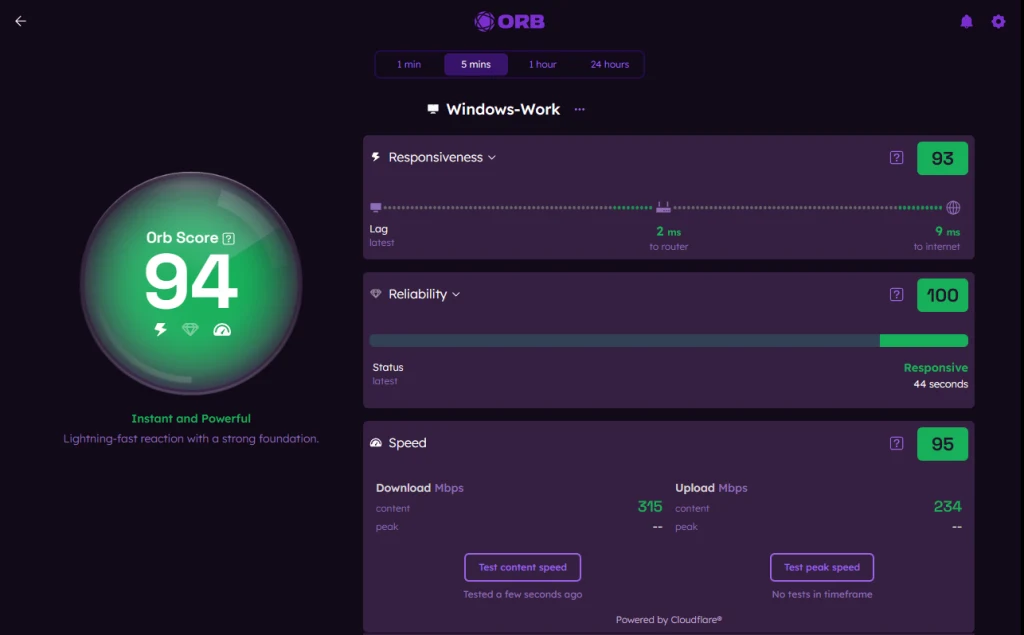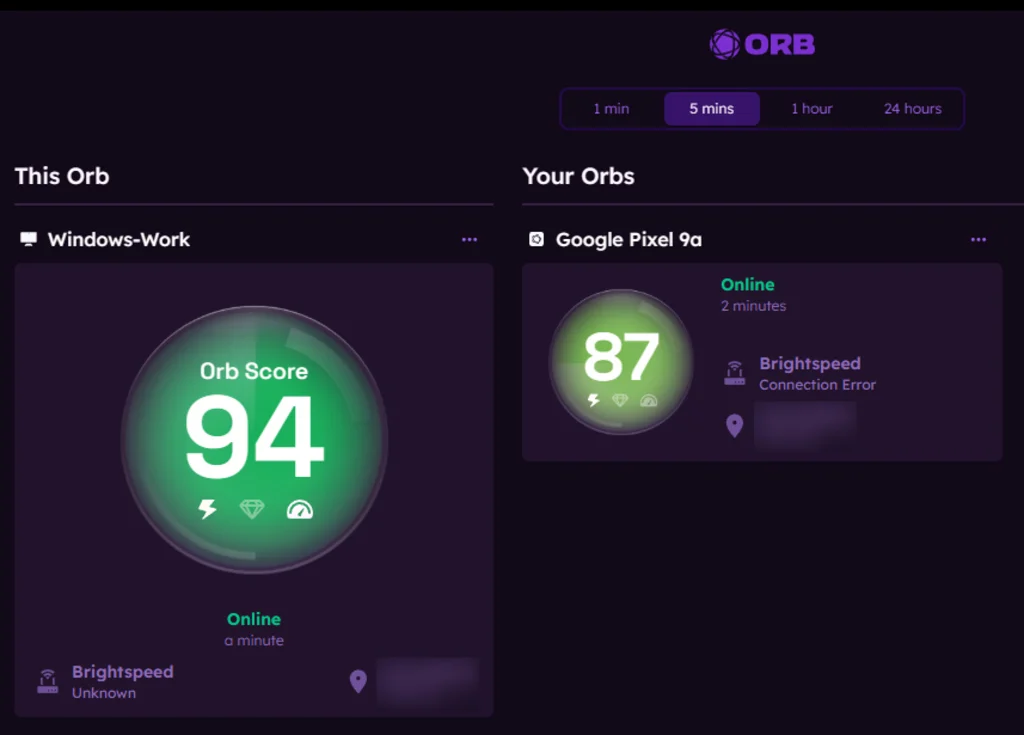These days, our tech experiences are all about speed—and our expectations for instant action are actually kinda insane.
Think about it: Not so long ago, phones, computers, and especially the internet were all painfully slow (at least, by today’s sonic-speed standards). Things have come a long way in a short time. And for most of us now, if something doesn’t load within a fraction of second, we grow impatient and maybe give up entirely—like when a webpage has the audacity to take a handful of seconds to show up and we click away in an indignant huff.
Hey, we’ve all been there. What’s especially wild, though, is that while the standards for speed have skyrocketed forward, the way we measure this stuff has remained mostly the same.
At least, until now.
This week, I’ve got an incredibly cool and tantalizingly new tool to share with ya. It’s an overdue update to the way we think about speed and assessing the allegedly lightning-fast connections we all pay for.
Get ready for a whole new way to think about the tech in front of you.
Psst: If you love these types of tools as much as I do, check out my free Cool Tools newsletter from The Intelligence. You’ll be the first to find all sorts of simple tech treasures!
The internet speed test—reinvented
Traditionally, when we talk about tools for testing your tech connection speed, we think about things like Ookla’s Speedtest, the native Google speed testing system, or the newer Cloudflare Internet Speed Test service.
We’ve covered those types of tools before. They’re all useful, in different ways—but they’re also all variations on the same tried-and-true type of speed assessment that’s been around for ages now.
Today’s tool is different. But it comes from a familiar source—someone who knows this area inside and out.
It’s the brand-new brainchild of the guy who created Ookla’s Speedtest, arguably the first internet speed test that became broadly known and embraced by the masses.
➜ It’s called Orb. And it’s decidedly different from your typical tech speed tester.
👁️ Orb works by looking not only at the basic power of your connection but also its responsiveness and reliability. The idea is that all of that adds up to create a more complete and ultimately meaningful view of your connection quality.
💡 And that number isn’t only about bragging rights, either: It’s meant to help you make sure you’re actually getting the speed you’re paying for—and then able to pinpoint precisely where and when any problems pop up.
⌚ You’ll need about two minutes to set Orb up and take it out for a spin.
- First, install the appropriate Orb app for whatever type of device you’re using.
- Open up the app and follow the quick steps to get it set up and ready.
- Orb will prompt you to sign in or create an account, but you can skip over that if you’d rather. The account just makes it possible to sync your testing data and view it from other devices.
Once that swift onetime setup’s out of the way, you’ll see Orb’s dashboard—with a tremendous amount of detail that lets you peek under the hood and learn exactly how much your current connection leaves to be desired.

Specifically:
- Responsiveness tells you how quickly your connection acts and how much lag you’ve got going.
- Reliability looks at the consistency of your connection and its responsiveness over time.
- And speed is the more standard measure of how quickly bits and bytes move across your connection (as measured by Cloudflare—the same basic speed testing tool we’ve recommended before!).
It all adds up to give you a never-before-visible complete picture of your internet speed quality—on your current device as well as any other devices on which you’ve installed the app and signed in.

Knowledge is power, as they say. And with Orb’s in-depth intelligence firmly in your mitts, you’ll be armed to the gills and ready to confirm that everything’s working the way it oughta—and ready to point your finger at the precise problem, if and when one appears.
- Orb is available on all major platforms, via a variety of native apps.
- It’s completely free for personal use. (The company also sells large-scale enterprise software setups, which seems to be where it intends to make money.)
- The tool comes from known, reputable internet researchers and is explicit about the fact that it doesn’t do anything disconcerting with the limited amount of data it collects.
Treat yourself to even more tech-enhancing goodness with my free Cool Tools newsletter. You’ll get an instant introduction to an incredible audio app and a new off-the-beaten-path gem every Wednesday!
Jelentkezéshez jelentkezzen be
EGYÉB POSTS Ebben a csoportban


The internet’s favorite programming is back on: #RushTok season is officially upon us.
If this is your first time tuning in, “rush” is the informal name for the recruitment process


WhatsApp has taken down 6.8 million accounts that were “linked to criminal scam centers” target

For more than a decade, enterprise teams bought into the promise of business intelligence platforms delivering “decision-making at the speed of thought.” But most discovered the opposite: slow-mov

President Donald Trump on Wednesday is expected to celebrate at the White House a commitment by

Character.AI is going social, adding an interactive feed to its mobile apps.
Rolled out on Monday, the new social feed may initially look similar
